The distant is in the near.The hunt is somewhat of a cultural gauge. There are always subtle shifts in the hunting motif. From brutal and tiring affair to the trappings of ritual, pomp and circumstance, the trophy has always assumed to the role of multi-purpose fetish object. The hunt never really ends, but perpetuates itself in a string of complicated, enigmatic and inscrutable unfolding of events that refuses to conclude.The death of Bin Laden certainly has had a carnival air, a May 1st festivity with the appropriate human sacrifice to Dionysus, along with the polemics of “saving lives through assassination.” Much like the Spielberg film, Munich, the distinguishing of justice from revenge, and revenge from vengeance is not apparent.
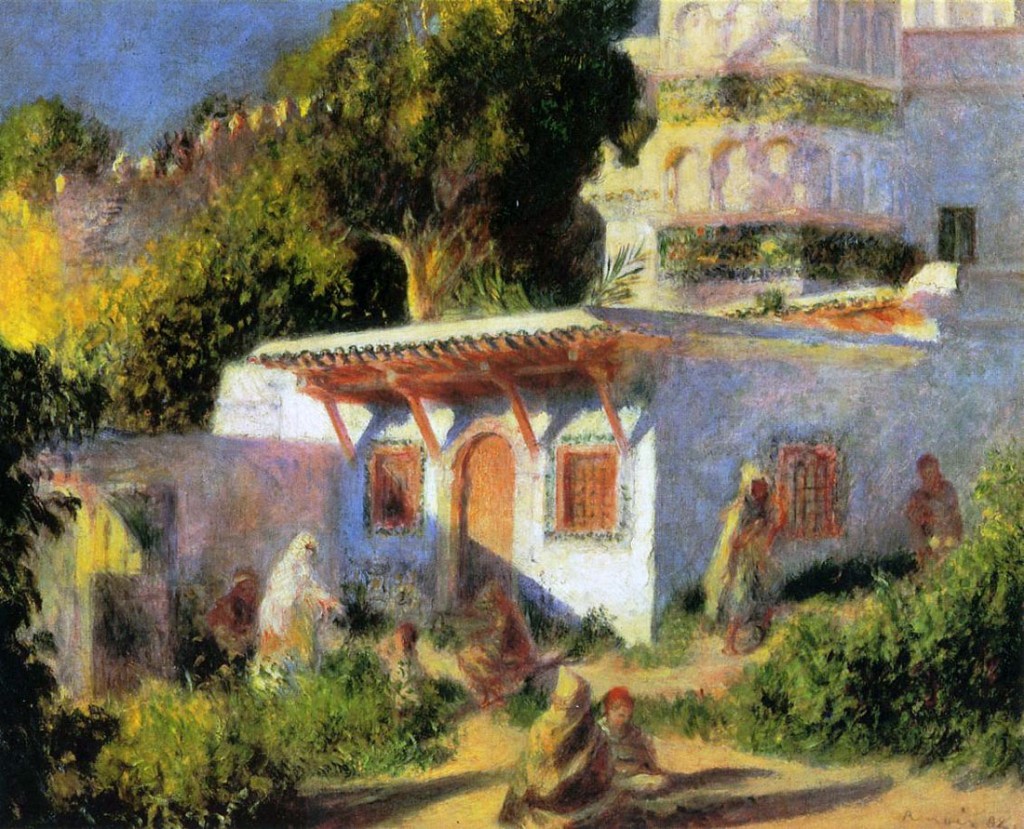
---Indeed, in order to center our attention on the people, most of whom are women, Renoir truncates the minaret. This matters because the most important part of a mosque is its minaret, the tower used to call for prayer five times a day and a long standing symbol of Islam. In truncating the minaret, Renoir reduces its significance, a critical maneuver that Benjamin neglects in his analysis of the painting. It isn’t clear at first why he decided to cut down the minaret,.... ----Spielberg does not want the viewer to identify with any Palestinian in the movie. He just wanted to identify with the expensive human beings: the Israelis. The Arabs are worse than they were in Renoir's painting, the Mosque,where they are an unidentifiable blob. For Spielberg they were just armed, with no humanity. They were not supposed to evoke emotions, and you were not supposed to see them bleed, and if you did, you had to cheer for their killers. ---- Read More:http://www.revisionisthistory.org/steinsaltz.html image:http://blogs.princeton.edu/wri152-3/s06/sdajani/mosque_in_algiers.html
There is a blurry distinction between venality and piety; If there is such morality, conscientiousness and piety on the part of the West why is there always the need to plan the next hunt:
Christopher Hitchens:After all, who did not know that the United States was lavishly feeding the same hands that fed Osama bin Laden? There’s some minor triumph, also, in the confirmation that our old enemy was not a heroic guerrilla fighter but the pampered client of a corrupt and vicious oligarchy that runs a failed and rogue state….
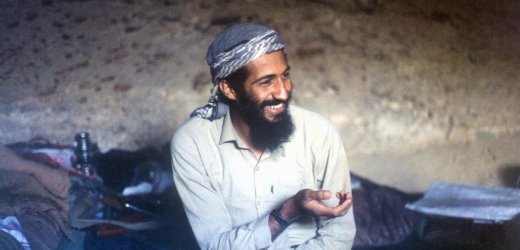
---Hitchens:In what people irritatingly call "iconic" terms, bin Laden certainly had no rival. The strange, scrofulous quasi-nobility and bogus spirituality of his appearance was appallingly telegenic, and it will be highly interesting to see whether this charisma survives the alternative definition of revolution that has lately transfigured the Muslim world. The most tenaciously lasting impression of all, however, is that of his sheer irrationality. What had the man thought he was doing? Ten years ago, did he expect, let alone desire, to be in a walled compound in dear little Abbottabad?---Read More:http://www.nationalpost.com/opinion/columnists/madman+ecame+coward/4715297/story.html
But, again, we were aware of all this already. At least we won’t have to put up with a smirking video when the 10th anniversary of his best known atrocity comes around. Come to think of it, though, he hadn’t issued any major communiqués on any subject lately (making me wonder, some time ago, if he hadn’t actually died or been accidentally killed already), and the really hateful work of his group and his ideology was being carried out by a successor generation like his incomparably more ruthless clone in Iraq, Abu Musab al-Zarqawi. I find myself hoping that, like Zarqawi, bin Laden had a few moments at the end to realize who it was who had found him and to wonder who the traitor had been. Read More:http://www.nationalpost.com/opinion/columnists/madman+ecame+coward/4715297/story.html

---Glenn Greenwald: Whenever America uses violence in a way that makes its citizens cheer, beam with nationalistic pride, and rally around their leader, more violence is typically guaranteed. Futile decade-long wars in Iraq and Afghanistan may temporarily dampen the nationalistic enthusiasm for war, but two shots to the head of Osama bin Laden -- and the We are Great and Good proclamations it engenders -- can easily rejuvenate that war love. Then again, America has fought both successful and unsuccessful wars; neither, historically, has dampened the enthusiasm for more.--- Read More:http://www.chicagomag.com/Chicago-Magazine/The-312/April-2011/The-Death-of-Osama-Bin-Laden-An-Omnibus/
…But in the Arthurian legend, the hunt is more complex than just a game for the merry idle or those with brutish inclinations. The return of the hunters. Is the stalking and killing of Bin Laden a form of return to the King Arthurian hunt? The chase is a conquest, a quest for love, nobility, honor, identity and the satiation of unadulterated blood lust; and even death.The Huntsman has been portrayed as both a master of wisdom and art, of stealth and assurance, and at times, as simply a “sneaky bastard.” The Hunt itself precipitates adventure, heralds troubles and passions, and launches listeners and readers into a wild ride of run-hide-fight, and “the finding” at the end of it all.Not only is the Hunt the impetus for action, the Hunted often leads the chase, acting as a guide who perhaps at the expense of his life leads his pursuer to a new kingdom, a new life or a fresh trial.

Hune at Martin Buber Institute:...to change the conditions of those opressed by irrational nationalism or religious extremism can be summarized by a profound understanding of freire's analysis. "indeed, the interests of the oppressors lie in 'changing the consciousness of the oppressed', not the situation which oppresses them". (paulo freire, chapter 1, the banking concept of education)...much of the discourse in the west focuses on changing the attitude or the perception or the approach to reality rather than changing reality itself. it is a misunderstanding of basic eastern philosophy. when it comes to real life in the context if a people colonized or oppressed,...the answer is both minds and houses, hearts and bricks and mortar... image:http://fullcomment.nationalpost.com/tag/death-of-bin-laden/
The prey is lured, and is a lure.Here we see as well that death is not held exclusively for the prey. The hunter may find that he is successful, has routed and taken his prey, or the prey may turn hunter and take the life of his pursuer. The Hunter becomes the Hunted.
Entrapment, the stalking of a prey vs “coursing,” adds a devious and disquieting element to the story.In any event, the importance seems the avoidance of idleness. At times the hunt never ends, but perpetuates itself in a series of harrowing or maddening events that refuse to cease, even after death. And yet the Hun, the targeted assassination reaches halfway between courtliness and war, figuring as a moral and physical substitute for battle in times of peace. Is this hardworking huntsman is more like
o gain Paradise? This of course, implies exhaustion. But exhaustion is not the same as “idleness,” it is a legitimate need that demands a reward. As in the Hunt for the Grail in Arthurian literature, achieving the Grail or the hart is not so much point as the hunt itself, and the journey home for a taste of the “hunter’s repose.”
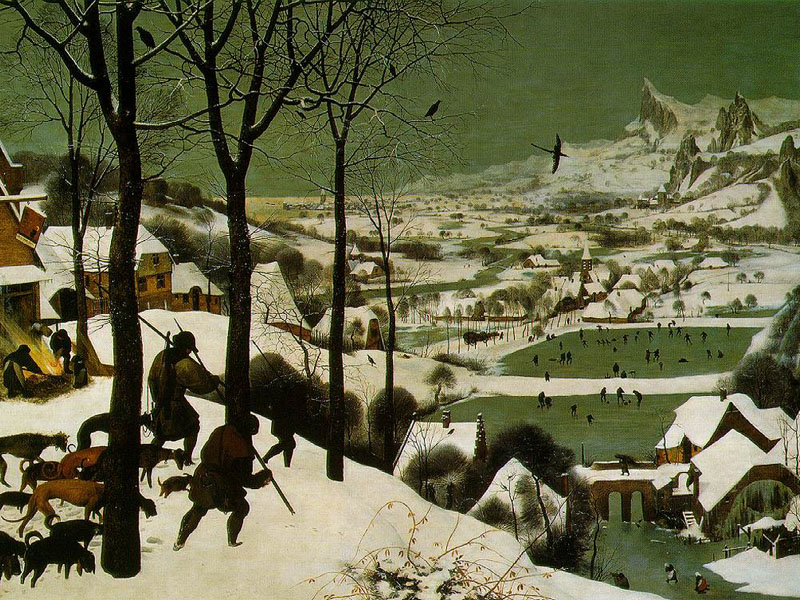
---Nancy Huntting:Eli Siegel, the great American poet and critic who founded the philosophy Aesthetic Realism, describes in his essay, Art As Composition, what this painting has and every person wants: The mind of man wants to see reality in two ways: as reassuringly continuous, and as delightfully surprising. If a person knew how much sameness he wanted to see in reality, he would be astonished; if he knew, too, how much difference he wanted to see in reality, he would be astonished. Man wants to see reality at once as the same and different: through art he can do this... I think in every detail, "Hunters in the Snow" shows reality as "delightfully surprising" and "reassuringly continuous," and as it does, Aesthetic Realism shows, Bruegel is answering a question of our lives.--- Read More:http://www.nancyhuntting.net/Bruegel-Talk.html image:http://wiki.tabc.org/Hunters+in+the+Snow
Was the killing of Bin Laden a matter of revenge or it was a matter of vengeance; A truncating of the minaret as in the Renoir painting above? The great 18th century lexicographer Samuel Johnson made the distinction: “Revenge is an act of passion; vengeance of justice. Injuries are revenged; crimes are avenged.” ( kanfer)
ADDENDUM:
The hunters are silhouetted sharply against the white snow, and they stand for fierceness. It seems thought, they haven’t been so successful – we see only one fox has been brought back, and their heads are bent as their dogs are, laboring through the snow. They are humble figures in relation to the vast, lively world before them. “Pieter Bruegel’s Hunters in the Snow is a picture that tells us, Everything can be composed. Lines can be composed. The general direction of the picture is at a slant, or diagonal; the trees are assertively vertical; there are horizontal lines with the snow. Varying white shapes differ and coalesce. Houses, as volumes, mingle with snow as weight, and with space. Birds are diagonal, vertical, horizontal. The immediate in the picture mingles with a various middle ground, and a spacious, rising, misty background. Here is reality’s plenty caught hold of by Bruegel and arranged. In Bruegel’s composition, there are tenderness and mystery — corresponding somewhat to curved lines and straight lines. Composition and reality make for a pleasure from reality as the picture.”
- Eli Siegel, Art as Composition
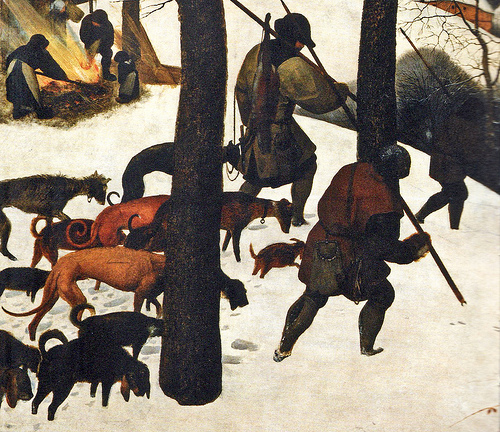
--- "Art wants to see the distant in the near," Mr. Siegel said in a lecture about art and the family. I studied "Hunters in the Snow" to see how Bruegel does this. I discovered that the most distant thing in the painting -- the highest mountain crag, with its triangular shape, is repeated again and again! We can find that triangle in the flying bird's wing, the steeples of the churches, the steep roofs of the houses, and most surprising of all, I realized that the whole foreground shape made by the diagonal of the hill and the house nearest to us is almost exactly the same as that crag! ...the crag is really more open and shown to us than those three hunters whose faces we cannot see. The largest, most visible human beings in the painting are also among the darkest, most unknown things. And they are each carrying a spear at the same sharp diagonal as that distant crag. The distant is in the near. Read More:http://www.nancyhuntting.net/Bruegel-Talk2.html image:http://www.flickr.com/photos/centralasian/5326896427/
Read More:http://www.nancyhuntting.net/Bruegel-Talk3.html Read More:http://www.jessieevans-dongray.com/essays/essay083.html
——————————————————————–
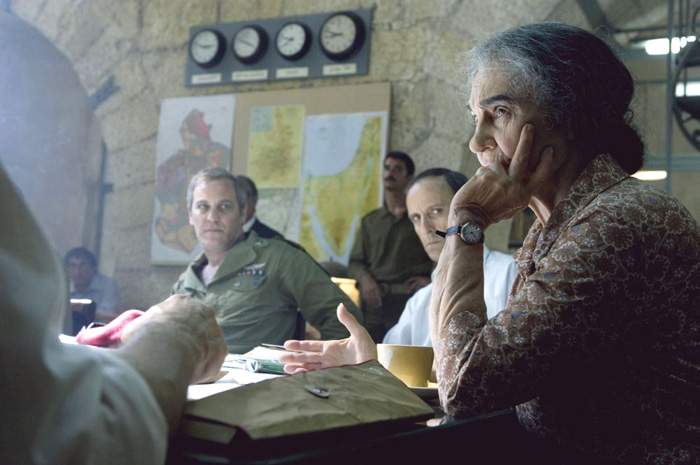
---Still, all these pale before the criticism of a UCLA professor named Judea Pearl. He is the father of the late Daniel Pearl, a Wall Street Journal reporter who was beheaded by Islamic terrorists in Pakistan for the crime of being a Jew. Prof. Pearl writes that Munich “does not explicitly justify terrorism, but it leans in that direction by assigning a palatable yet unchallenged rationale to the Palestinian terrorists, and by having the Israeli hero suffer a crisis of conscience. . . . Missing from the script is the most important theme of all: justice.”--- Read More:http://www.city-journal.org/html/rev2006-01-10sk.html image:http://www.aceshowbiz.com/still/00000895/munich_10.html








 COMMENTS
COMMENTS



